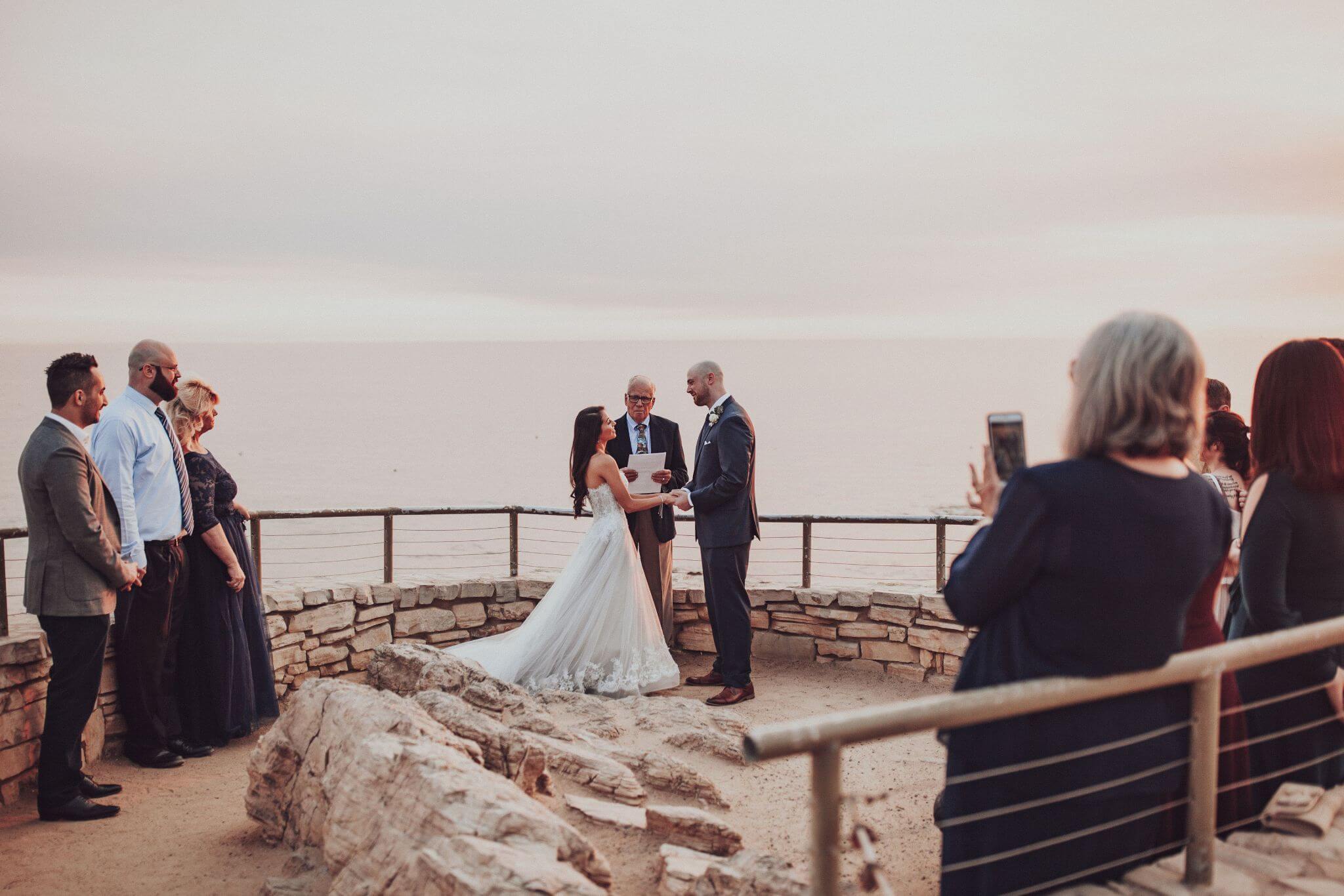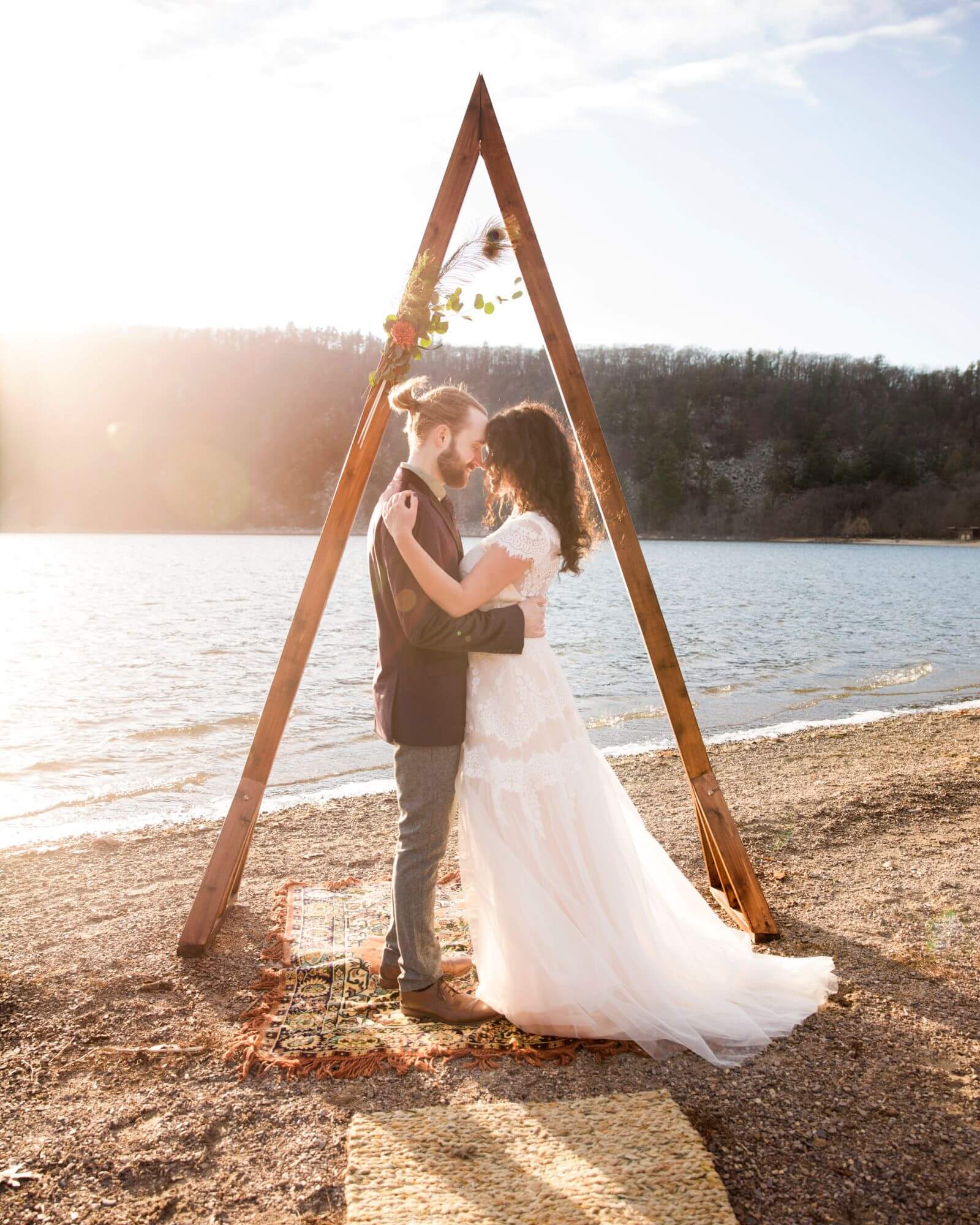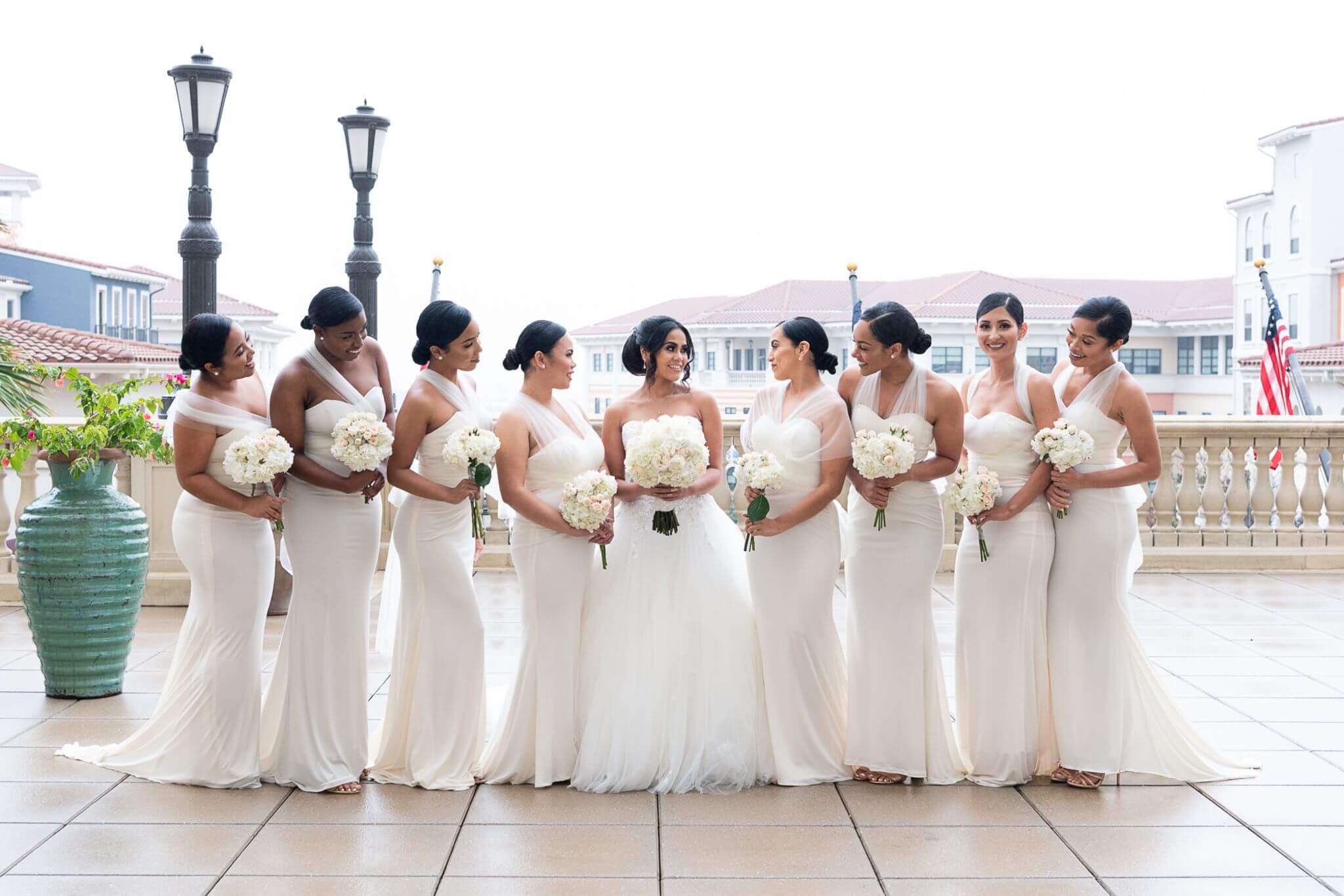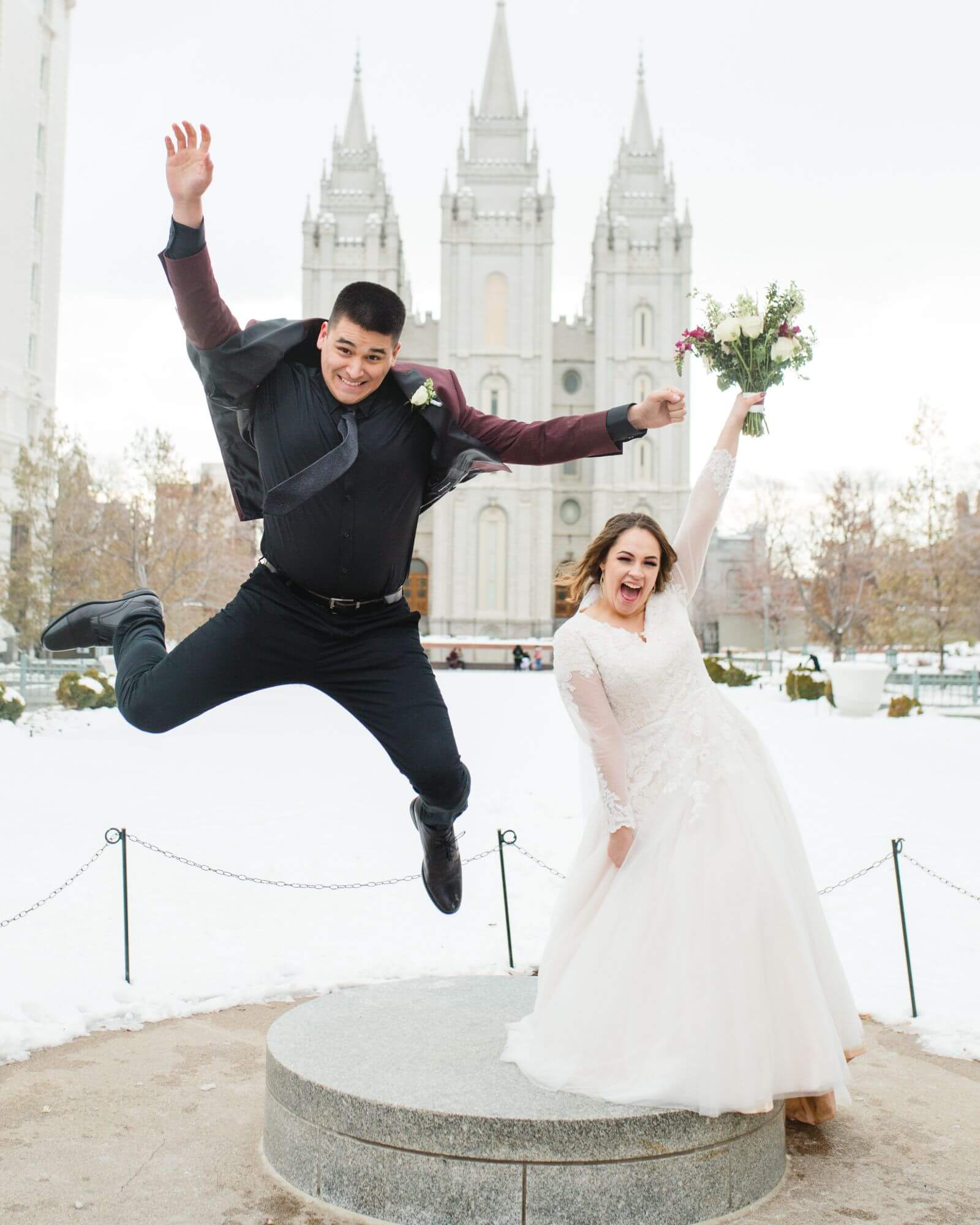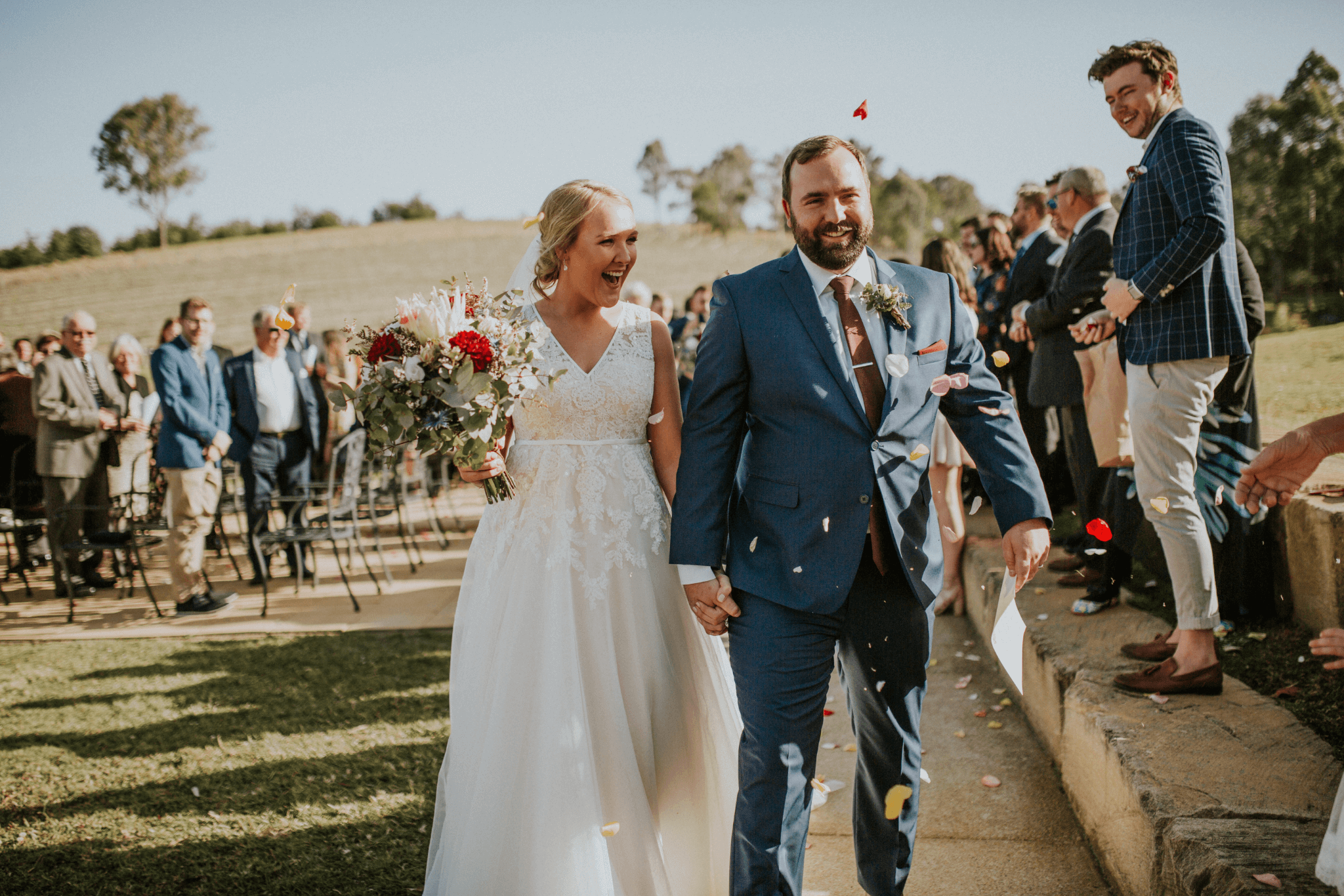Your wedding size will determine the number of plates or buffet service at the reception, invitations ordered, favors needed and seating needed for the ceremony and reception venues, and will affect most aspects of the wedding. Clearly, the wedding size is important, but how do you choose it?
Style: #LD5056; Image Credit: Bethany Jean Photography
Table of Contents
1. Talk with your fiancé
Of course, the first thing you need to do is to have a heart-to-heart talk with your fiancé and discuss what each of your expectations are for the big day. Do you envision something intimate and simple or all-out and elaborate? Would he love a home town event or do you have your heart set on a destination wedding in Italy where you can rock your lovely A-line wedding dress? Communication is the key to a happy and successful marriage, so you might as well start with good communication before you are married. Discussing the wedding expectations early will make the process of planning the wedding as well as the wedding day experience itself less stressful for both of you.
2. Make your guest list
Armed with heavy artillery, now it’s time to make your guest list. For this, you may need to sit down with your betrothed, parents and/or step-parents, and other significant people in both your lives. Be open to putting your father-in-law’s second cousin, small children, and your fiancé’s college roommate on the list. Don’t forget friends and co-workers, and also include a guest for every single person invited over the age of 18. Think of this first draft of your guest list as a brainstorming session or master list that’ll be cut, edited, and even slashed as needed (with the proper sensitivity given to all involved, of course).
Style: #PR3300; Image Credit: Wild Elegance
3. Editing and trimming
Now that you have your master guest list in hand, you’ll most likely need to edit it and maybe even cut some people from the list. This is the time to consider and evaluate the wedding theme, location, and style decided by you and your fiancé. A list of 400 guests might not be a good idea if you have decided to wear a fancy ball gown wedding dress in your beachside gazebo wedding in the Cayman Islands. When editing your guest list, remember to be fair. If you have invited all of your adult first cousins and their spouses, it’s only fair and proper to invite those of your husband-to-be. It might help you to break down your master list into categories of people:
- The bridal party
- Relatives you must invite
- Close friends and co-workers, you must invite
- Relatives you would like to invite
- Friends and co-workers you would like to invite
- People unknown to you but are requested by your parents or in-laws
- Distant relatives
- People who are merely acquaintances
Style: #PR3498; Image Credit: Olvera Photography
4. Don’t randomly set a final number just yet
Feel free to add to or change these categories to fit your own personal circumstances. Consider the categories above and come to a compromise or a consensus. This may be easier said than done. If the discussion gets heated, consider allowing all involved to invite a set number of “freebies.” If you didn’t really plan on inviting your future father-in-laws golf buddies or your fiancé’s softball teammates, they can be invited under the category of the six (or whatever number you designate) “freebies.”
5. Tally a good solid number
Count up your guests but remember to be flexible and fair. Sometimes you need to make some tough decisions and cut people depending on your venue or budget. If inviting all adult second cousins for both you and your fiancé pushes your number much higher than you can manage, then you’ll need to cut all of the second cousins from the list. You can adjust the list up until the time the invitations are mailed. If you forgot to invite your sibling’s mother and father-in-law three weeks before the invitations are mailed, check your ceremony and reception seating capacity and feel free to invite them as well.
Style: #LD4432; Image Credit: Charissa Lee Photography
6. The case of confirmed responses vs. actual attendees
Don’t let the guest list be confused with the number of responses or confirmed number of guests that’ll actually attend the wedding. That’ll be determined by the invitation response cards returned to you at a much later date. Until then you can estimate the number of wedding guests. As a general rule, 20%-30% of invited guests will be unable to attend. This number may be higher if you’re having a destination wedding or if a large number of your friends and family live out-of-town. Though it’s unlikely, it’s very important to be prepared logistically and financially for 90% of your invited guests to attend. Most reception halls and caterers will require an exact head count (including the bride and groom) of all guests and wedding attendants usually one week to three days before your wedding day. By that date, you should’ve received all of your invitation response cards and called to confirm those invited guests who didn’t mail you their responses back by the date requested.
Style: #LD3932; Image Credit: Red Tent Photography + Films
7. When all is said and done,
Remember that you want to share and celebrate the joy of your wedding day with people who love and support you and your future husband. Occasionally, you may have to invite someone out of obligation, but this should be only a few exceptions, not the rule. People are sensitive about weddings and feelings will be hurt if the bride’s sister is permitted to bring her young children but the groom’s brother is not. Choosing a wedding size is very much like buying a wedding gown: use common sense and good judgment, keep your budget in mind and above all, go with your heart.

